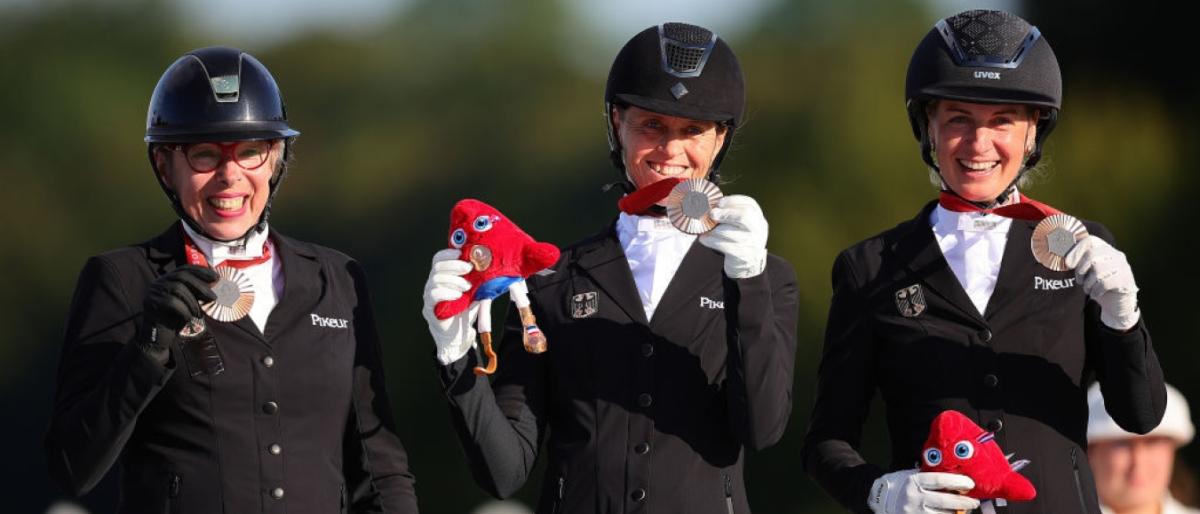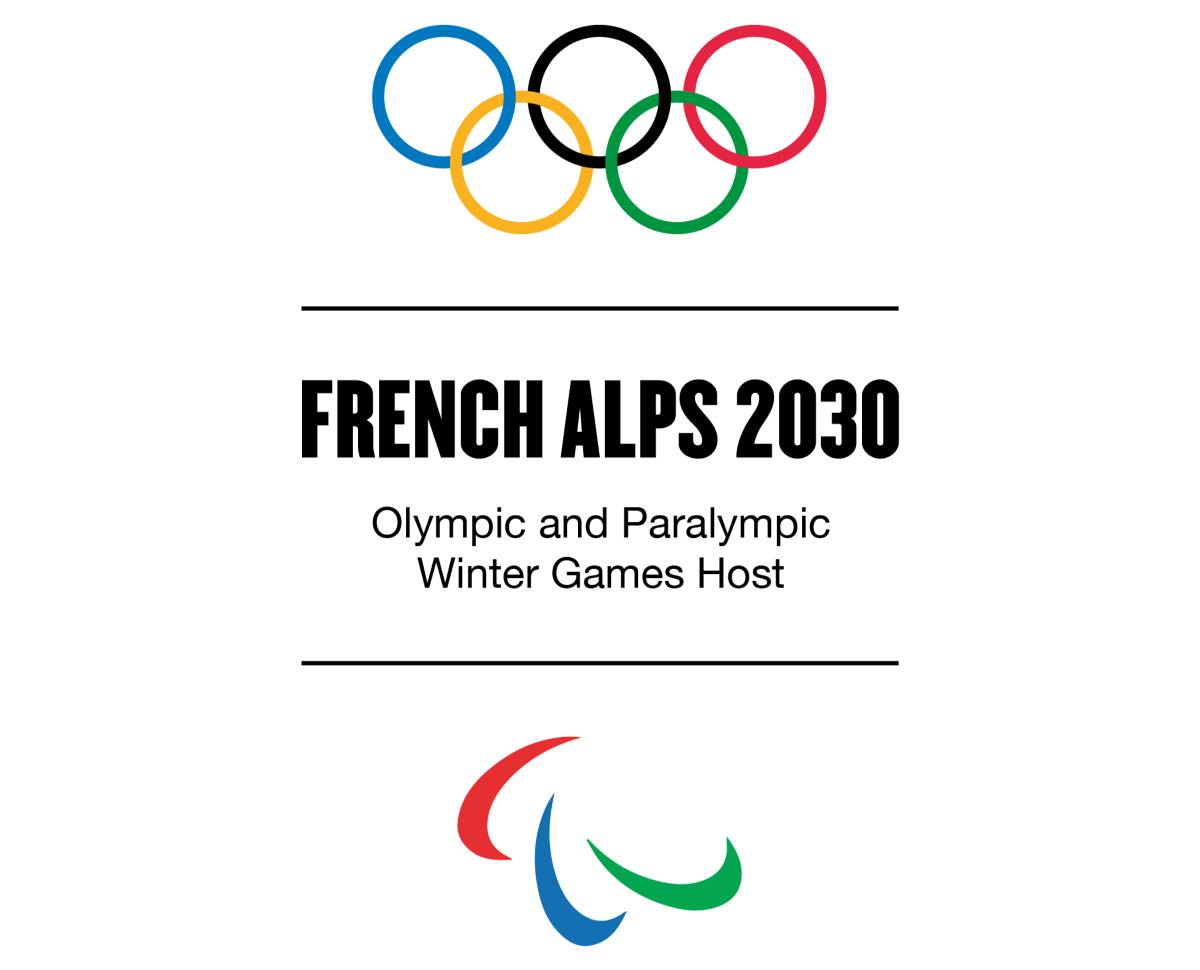Showcase

Medals
Meet the Paralympic Mascots that have been ambassadors for the Paralympic Games, welcoming athletes and fans from all across the world.
The Paralympic medal — a symbol of excellence in Para sport — represents the culmination of an athlete’s determination, courage, and commitment. Each medal serves as a source of inspiration for generations to come.
First awarded at the Rome 1960 Paralympic Games, medals were initially designed and produced by the Local Organising Committees. Over time, the International Olympic Committee (IOC) and the International Paralympic Committee (IPC) agreed that Olympic and Paralympic medals should be crafted using the same materials and feature similar design elements.

Paris 2024
Incorporating iron from the Eiffel Tower, renowned French jeweller Chaumet designed the Paris 2024 Paralympic medals to reflect both the spirit of the Games and the essence of Parisian heritage.

Beijing 2022
Named Tong Xin ("Together as One"), the Beijing 2022 Paralympic medal embraced an inclusive design, symbolizing the unity and shared excellence of both the Olympic and Paralympic Games.

Tokyo 2020
Pioneering accessibility, the Tokyo 2020 medals incorporated tactile elements and natural motifs, making them more accessible to athletes with visual impairments.

PyeongChang 2018
Designed by Lee Suk-woo, the PyeongChang 2018 medal featured a culturally rich and subtle design that invited reflection on Korean heritage.

Rio 2016
Inspired by the motto Spirit in Motion, the Rio 2016 medal featured a continuous spiral of seed-like shapes, symbolizing growth and energy.

Sochi 2014
The Sochi 2014 medal showcased translucent "ice crystal" inlays and quilt-like patterns, reflecting Russia's diverse landscapes.

London 2012
The London 2012 medal embedded textures inspired by the ancient Greek statue Nike of Paionios, bringing classical elements to modern sport.

Vancouver 2010
Blending Indigenous First Nations art with British Columbia's natural environment, the Vancouver 2010 medals featured imagery such as the raven, a symbol of transformation.

Beijing 2008
With a central ring of jade, the Beijing 2008 medals highlighted Chinese cultural symbolism through minimalist elegance.

Torino 2006
Adding a vibrant splash of colour, the Torino 2006 medals stood out with a dynamic visual energy aligned with the atmosphere of the Games.

Athens 2004
Depicting the Parthenon atop the Acropolis, the Athens 2004 medal was the last to feature the previous Paralympic symbol, the Tae-Geuks.

Salt Lake City 2002
The Salt Lake City 2002 medal included the inscription "Mind, Body, Spirit," echoing the then-motto of the Paralympic Movement.

Sydney 2000
The Sydney 2000 medal featured the host city's iconic skyline and the Tae-Geuk emblem used at the time.

Nagano 1998
The Nagano 1998 medal drew inspiration from the mascot "Para Rabbit," offering a whimsical yet meaningful design.

Atlanta 1996
Embodying the concept of flame and rebirth, the Atlanta 1996 medal paid tribute to "Blaze the Phoenix."

Lillehammer 1994
With a central medallion of gold, silver, or bronze embedded in iron, the Lillehammer 1994 medal symbolised strength and unity.

Barcelona 1992
Simple and timeless, the Barcelona 1992 medal reflected the elegance of minimalist design.

Tignes-Albertville 1992
This medal paid homage to the host region's mountainous terrain, connecting nature with sport.

Seoul 1988
Used from 1988 to 1994, the Seoul 1988 medal was the first to display the five Tae-Geuks, establishing a new visual identity for the Games.

Innsbruck 1988
Featuring the word "Paralympics," this medal combined simplicity with classic design.

Stoke Mandeville & New York 1984
These Games marked the first time medals were awarded in gold, silver, and bronze.

Innsbruck 1984
This medal was the first to feature sport-specific engravings and included the Olympic rings, reflecting collaboration with the IOC.

Arnhem 1980
Maintaining a traditional design, the Arnhem 1980 medal reflected the values of the early Paralympic Movement.

Geilo 1980
Inscribed with the official title, "2nd Olympic Winter Games for the Disabled," the Geilo 1980 medal acknowledged the evolving identity of the Games.

Toronto 1976
With braille inscriptions like "Everybody Wins," the Toronto 1976 medal introduced inclusive messaging and adopted the title "1976 Toronto Olympiad."

Örnsköldsvik 1976
As the first medal to prioritise accessibility, Örnsköldsvik 1976 included braille markings of "OS 1976."

Heidelberg 1972
Featuring three interlocking wheels, the official emblem of the Stoke Mandeville Wheelchair Sports Federation, these medals mirrored earlier designs.

Tel Aviv 1968
Celebrating 20 years since the Stoke Mandeville Games began, this medal represented friendship, unity, and sportsmanship.

Tokyo 1964
Unique for its collaboration with patients at the Stoke Mandeville Hospital, the Tokyo 1964 medal reflected deeply personal craftsmanship.

Rome 1960
The inaugural Paralympic medal, awarded at the Rome 1960 Games, marked the beginning of a global celebration of Para sport excellence.
FAQ
The weight varies from Games to Games, depending on the design, materials, and dimensions used.
The first Paralympic medals were awarded at the Rome 1960 Paralympic Games, the origin of the modern Paralympic medal tradition.
Yes. Each Paralympic Games features uniquely designed medals inspired by the host city’s culture, identity, and creativity.
Initially, medals were designed by the Local Organising Committees. Today, artists or designers from the host country or city are selected to create the medals, following the agreement between the IOC and IPC that ensures Olympic and Paralympic medals are made of the same materials and feature aligned design elements.



